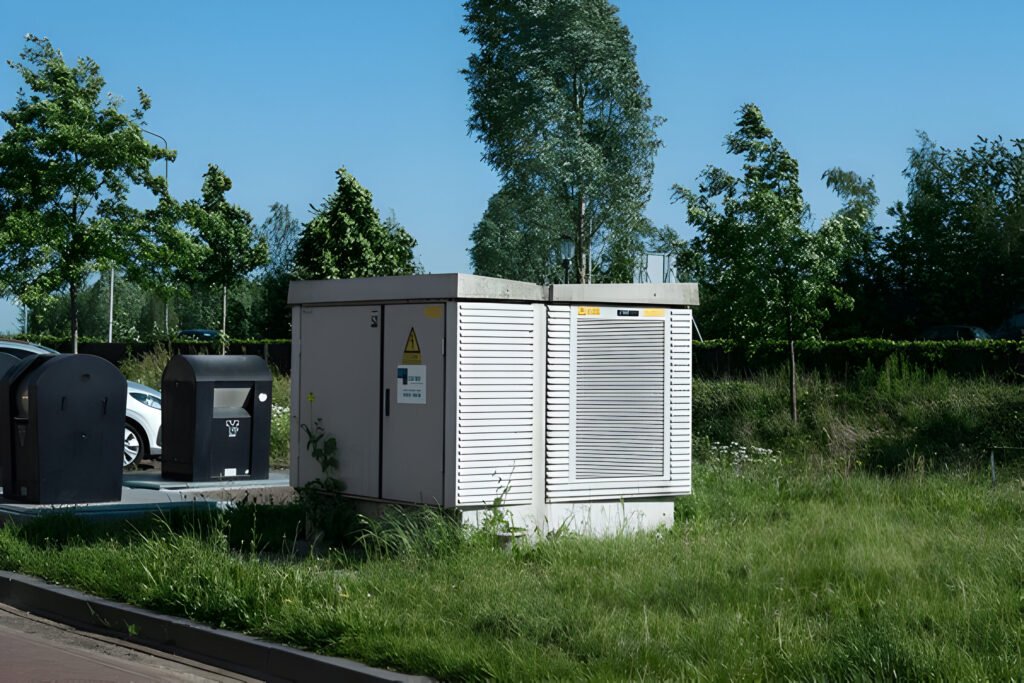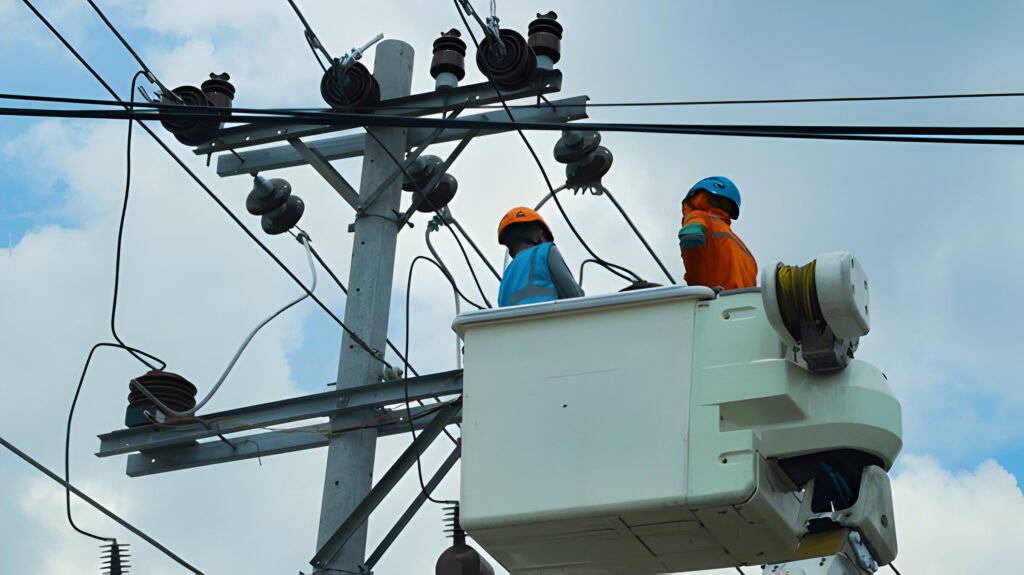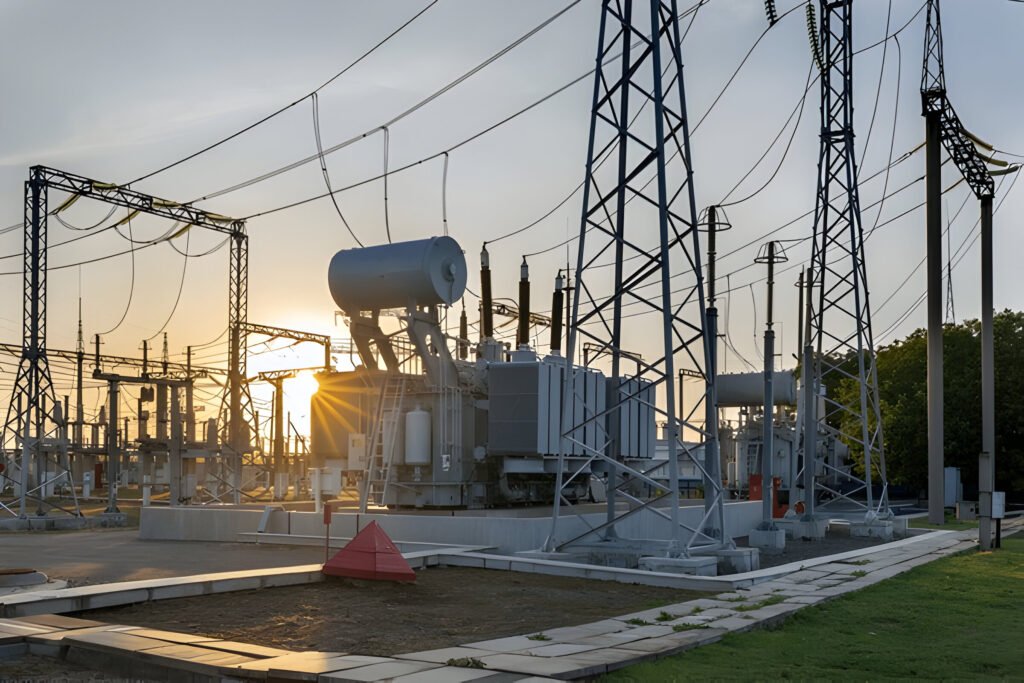What Is the Difference Between Single-Phase and Three-Phase Transformers
Single-phase and three-phase transformers differ in their construction, connection, and application in electrical systems.
Read More
Distribution transformers reduce high-voltage electricity to a lower voltage for safe, domestic use, while isolation transformers provide electrical isolation, ensuring safety by preventing direct current paths.

A distribution transformer is an electrical device used to step down the voltage of electrical energy for distribution to residential, commercial, and industrial users. It is a critical component in the electric power distribution system, ensuring that the high voltage from transmission lines is reduced to safer, usable levels for end consumers. Typically, distribution transformers operate at low voltages, which are suitable for local consumption.
Distribution transformers are designed to operate continuously under full-load conditions and are highly efficient at converting electrical energy. They are usually located on utility poles, below ground, or mounted on pads in urban, suburban, and rural areas.
An isolation transformer is a specialized type of transformer designed to transfer electrical power from a source of alternating current (AC) to a device while isolating the powered device from the power source. This isolation is achieved through the use of galvanic separation, which means there is no direct electrical connection between the input and output circuits. Instead, the transfer of electricity occurs via electromagnetic induction.
The primary function of an isolation transformer is to prevent electrical shock hazards and to suppress electrical noise in sensitive equipment. By isolating the device from the power source, it helps safeguard against electric shocks caused by ground faults.

Distribution transformers are typically connected to the main power grid, using a step-down approach to convert high-voltage electricity to a lower voltage suitable for residential or commercial usage. These transformers are directly connected to the power lines, allowing for efficient energy distribution across large areas.
Isolation transformers serve a more specialized purpose. They provide electrical isolation between the input and output circuits. By having separate primary and secondary windings, isolation transformers prevent direct electrical connection, thereby offering protection against electric shocks and interference.
Distribution transformers are designed for high efficiency, typically ranging from 95% to 99%, as they need to minimize energy loss during transmission.
Isolation transformers, while also efficient, might not achieve the same levels as distribution transformers due to their design focus on safety and noise reduction rather than energy transmission. Their efficiency can vary depending on the application but usually remains high enough to be effective for specialized tasks.
The cost of distribution transformers is often higher due to their larger size and complexity in handling high voltage levels.
Isolation transformers, being more compact and used for specific applications, are generally less expensive.
Energy efficiency in distribution transformers is optimized for continuous operation at full load or near full load conditions. This ensures that they can handle varying demands typical in power grids without significant energy loss.
Isolation transformers are less focused on energy efficiency at varying loads and more on providing consistent performance for sensitive equipment. This means that while they maintain energy efficiency, it may not match the peak performance levels of distribution transformers.
Distribution transformers are equipped to handle power surges that occur frequently in grid systems. They are robustly designed to endure these fluctuations without affecting their performance or lifespan significantly.
Isolation transformers provide an additional layer of protection against power surges by isolating the device from the power source. This is especially important for sensitive electronic devices that could be damaged by sudden voltage spikes.
The life expectancy of a distribution transformer typically exceeds 20 years, depending on maintenance and environmental conditions.
Isolation transformers can last equally long if maintained properly. Their life expectancy is often determined by the quality of insulation and the thermal management of the device, which protects against degradation over time.
Distribution transformers usually have a fixed turns ratio to step down the high grid voltage to the standard service voltage required by consumers. This fixed ratio ensures consistent performance and voltage regulation across the network.
Isolation transformers can have variable turns ratios depending on the application needs. The primary goal is not voltage transformation but isolation, although some models offer step-up or step-down capabilities as needed.
In distribution transformers, the winding configuration is often delta on the primary side and star (wye) on the secondary side. This configuration helps in managing phase shifts and reducing losses during transmission.
Isolation transformers typically use a star-to-star or delta-to-delta configuration, focusing on isolating the input from the output. This setup is particularly useful in eliminating ground loops and reducing noise in sensitive applications.
Distribution transformers are available in a wide range of power ratings, from a few kVA to several MVA, to accommodate different scales of power distribution requirements.
Isolation transformers generally have lower power ratings, as they are designed for specific applications such as industrial environments, medical equipment, or audio systems where isolation is more critical than power handling.
Distribution transformers are larger due to their capacity to handle high voltages and currents. They are often mounted on poles or placed in substations to serve a wide area.
Isolation transformers are smaller and more compact, suitable for indoor or equipment-based applications.

Distribution transformers are predominantly utilized in the final stage of the electricity distribution process to ensure safe and efficient power delivery to end consumers.